Save Druid Heights
Working to preserve a beautiful and historic place
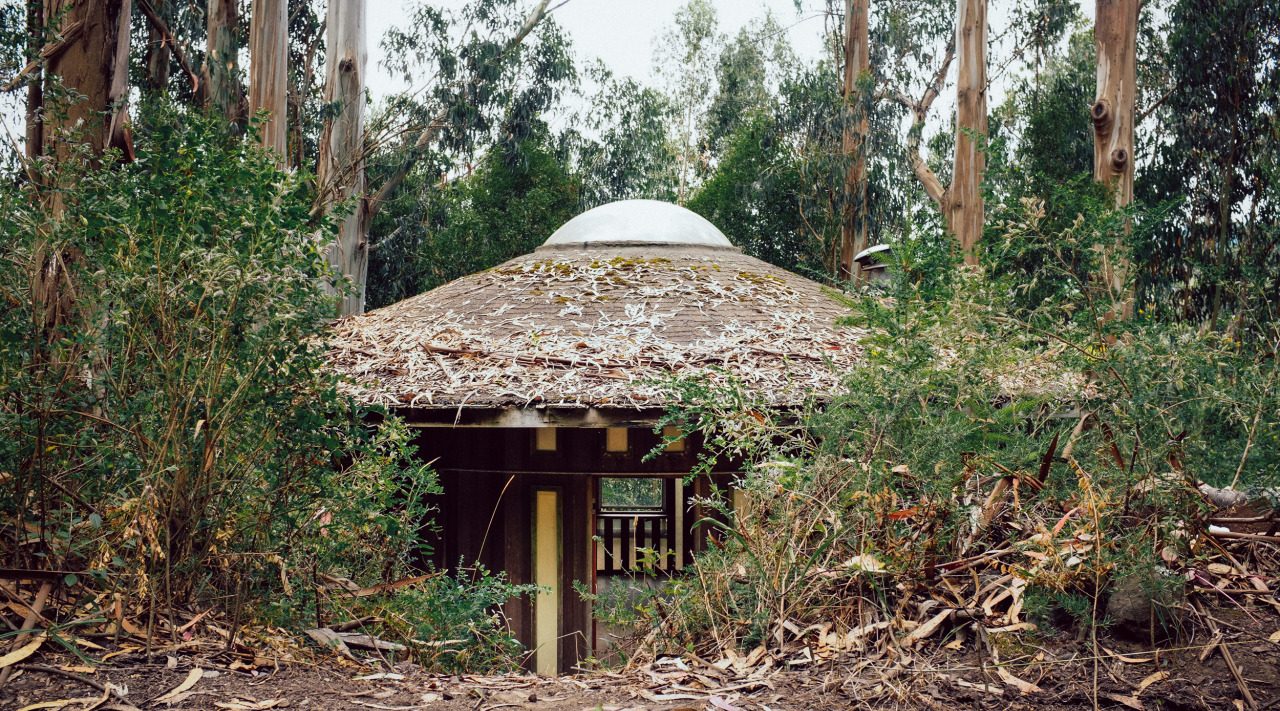
With DRUID HEIGHTS JUST A QUARTER MILE AWAY…
In 2022, according to National Park Service data, 798,625 visitors came to Muir Woods National Monument. If they parked in the overflow lot seen in the photo they would have been just 1246 feet as the crow flies from Elsa Gidlow’s house at Druid Heights according to Google maps. I am sure almost none of those nearly 800k visitors knew it.
Yesterday I was asked what someone in the SF Bay Area as a resident or visitor could do to encourage the National Park Service to take action to restore the buildings at Druid Heights. I replied that paying a visit to Muir Woods Visitor Center and asking for information about Druid Heights and how to get to it would let the Park Service know where you and those who come with you stand on Druid Heights preservation.
While you are well within your rights to ask questions like those don’t forget that the staff person you are talking to is not a decision maker. They may even be a Park Service employee who would like to see DH preserved but can’t rock the boat without risking their job. Sadly word of such has come my way…..Venting any frustrations you feel on them is unfair as they don’t have a say.
Visiting Muir Woods used to be a free for all, meaning if the lots were full cars were often parked along the roadside.
You can hike to Muir Woods from elsewhere but from any of the possible starting points you will have a fairly long hike in front of you, and most routes would include a lot of up and a lot of down.
Parking is no longer allowed along the road outside the lots and to park in them you need a reservation.
An alternative is parking a few miles away and using the shuttle bus system. Again, both options require prior reservations, and depending when you plan to go you might need to make reservations well in advance of your visit.
Parking as of 6/27/23 is $9 per vehicle, the shuttle is $3.50 per person and entry to the park past the visitor center is $15.
If you do not want to go past the visitor center you have the option of hiking on the Dipsea Trail (see sign in the photo) that heads away from the overflow lot in two directions. Either would give you a view of the Muir Woods area, with 6 acres of its 554 being Druid Heights
For more specific transportation and parking info use the first link below. The second is for the Muir Woods official website.
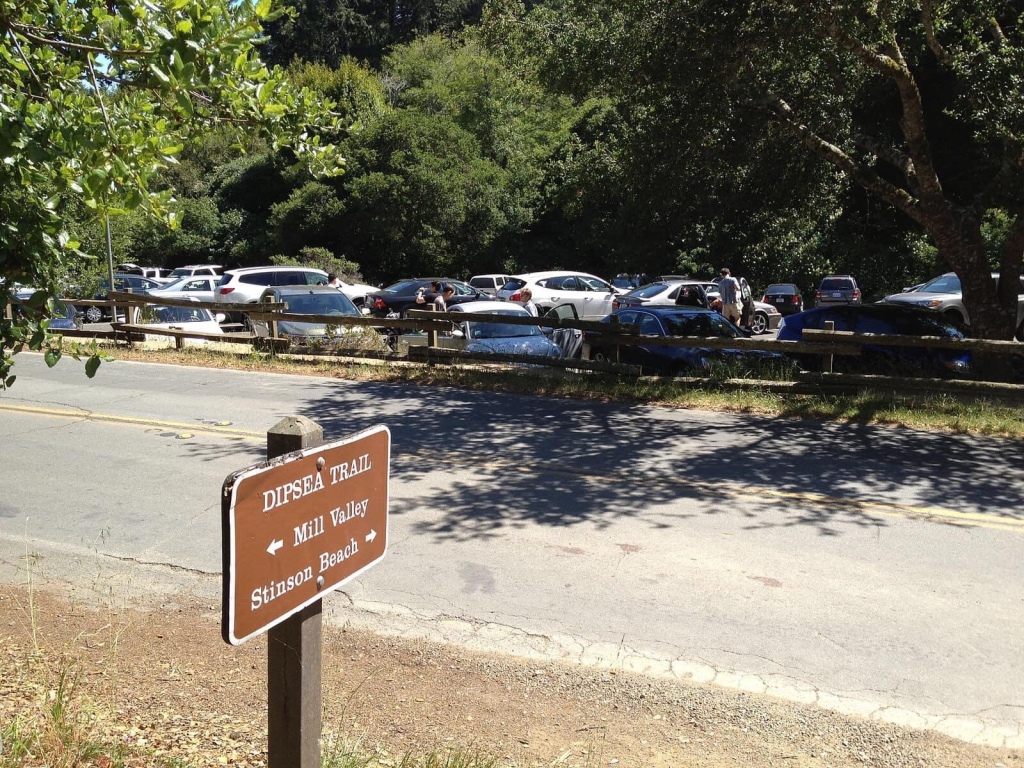
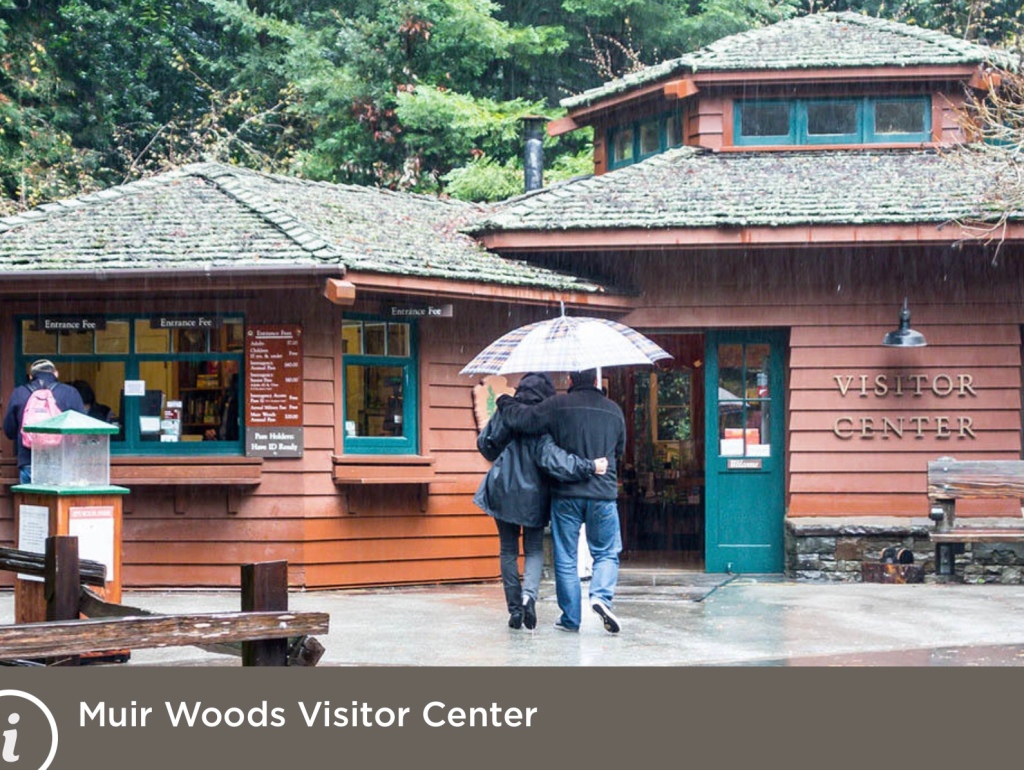
SADLY SO VERY COMPARABLE TO DRUID HEIGHTS
https://www.cnn.com/travel/article/cape-cod-dune-shack-artist-eviction/index.html
The National Park Service continues to amaze, and too often not for good deeds when it comes to historic structures. In this case they are evicting a 94 year old artist from a “dune shack” while simultaneously putting other “dune shacks” up for lease.
The National Park Service has said they don’t have the funds to care for Druid Heights but if they had continued leasing the Library, Elsa Gidlow’s House and the Twin Peaks House after they took full control of them years ago and then used the funds generated to maintain and improve those buildings and the access road to DH what an incredible difference it would have made, all without impacting the limited budget they have many a time mentioned when asked about the condition of the empty buildings at Druid Heights.
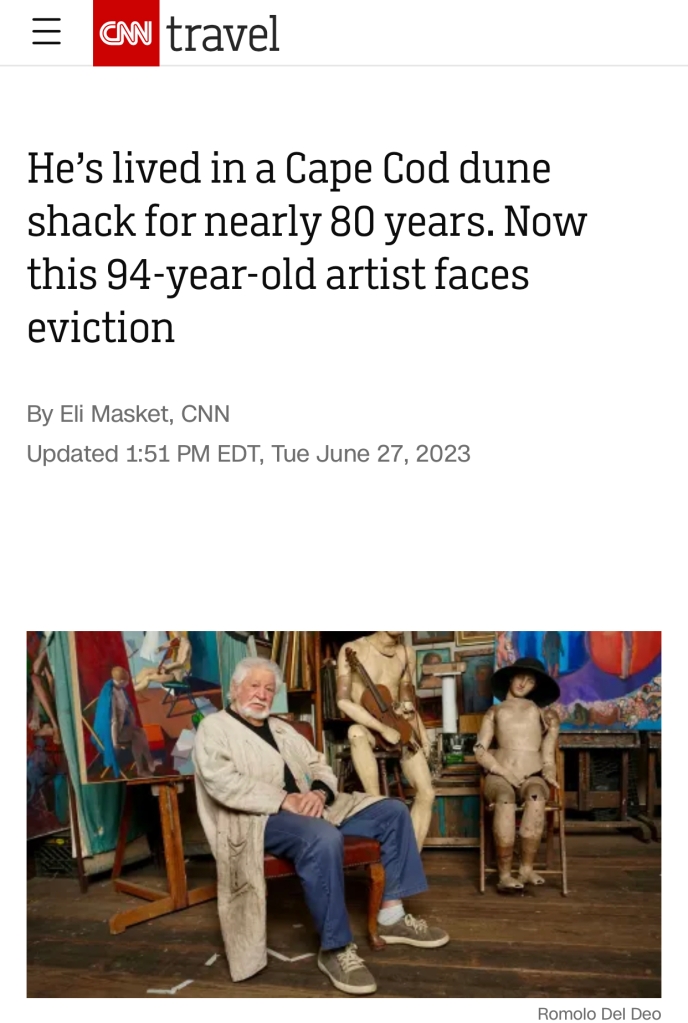
THE BBC COVERS DRUID HEIGHTS
Author Melanie Haiken is a Mill Valley native that I have known since the late 1970s. I first urged her to write about DH several years ago if she found an interested outlet. Given Druid Heights’ connection to the UK, most significantly through Elsa Gidlow and Alan Watts, a BBC story is perfect. Great to see more coverage of the Druid Heights story in a high profile media outlet!
https://www.bbc.com/travel/article/20230620-druid-heights-the-us-hidden-lgbtq-community
NOW AVAILABLE ON YOUTUBE: THE ENTIRE WALKING TOUR OF DRUID HEIGHTS WITH GERD STERN AND FRIENDS, 5/24/18
On May 24th 2018 Beat Generation poet and pioneering multimedia artist Gerd Stern, his partner Judith, the author of this post, Michael Toivonen and photographer David Keaton took a walk through the history nocvupied portions of Druid Heights.
To make an informal record of our visit I kept my iPhone, mounted on a hand grip, recording the entire time. We were constantly on the move so, given the obstacle course that is Druid Heights, I could give little attention to aiming the camera. I as well felt the need to make sure Gerd, at 89, did not lose his balance.
The vast majority of the dialogue is between Gerd and I. Gerd shared his memories from his visits to Druid Heights and I did my best to answer his questions based on what I had learned after ~18 months of serious interest in DH.
Gerd had spent several weeks using Roger Somers workshop at DH in 1963 while he built his pioneering multimedia sculpture “Contact Is The Only Love”. On another occasion Gerd told me that besides allowing him to use the workshop Roger had also helped with the sculpture’s construction. But Gerd had, as recorded here, first visited Druid Heights in the 1950s.
It was a real pleasure to spend time at Druid Heights with Gerd. He is a natural story teller who was very happy to be both back at a place that meant a lot to him, and to recall his friendship with Roger Somers and his then wife Barbara.
“SIDE CANYONS, DEER TRAILS, CLIFFS & THICKETS”
The poem below from short term (several months, fall 1969 through early/mid 1970 ) Druid Heights resident Gary Snyder was dedicated to Druid Heights resident Alan Watts following his death on November 16, 1973. I believe their time at DH overlapped. If you have ever hiked in the Mt. Tamalpais/Marin headlands area you know that Snyder’s words match the land near DH as well as the way of Alan Watts.
The photos of Watts and Snyder date from the late 1950s. By then they had been friends for several years.
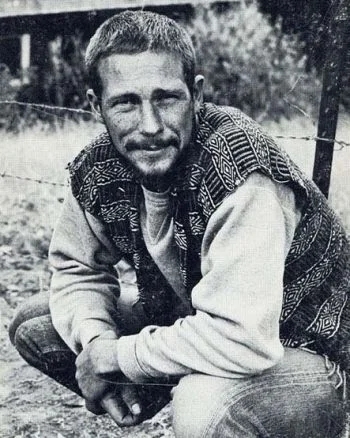
“For Alan”
“He blazed out the new path of all of us , and came back and made it clear .
Explored the side canyons and deer trails ,
And investigated Cliffs and thickets..
Many guides will have us travel single file,
Like mules in a pack train and never leave the trail .
Alan taught us to move forward like the breeze ,
Tasting the berries ,greeting blue jays, learning and loving the whole terrain..”
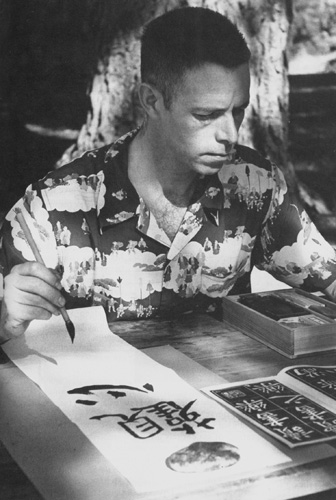
A DEEP DIVE INTO THE STAGNANT STATUS QUO AT DRUID HEIGHTS
If you want to get a better sense of the situation at Druid Heights you need to read the article “America’s Only LGBTQ Historic District Is Falling Apart” linked to below all the way through to the end. Unfortunately the owner of Druid Heights, the US National Park Service, did not respond to many of the questions of writer Leo D. Rocha.
While the story focuses on the LGBTQ legacy aspect of Druid Heights it includes much more, and it is the best coverage to date on the background of the tragic neglect of a unique historic place. Use the link blow to view the story:
Rocha interviewed many others who did answer his questions, including the author of this post. One quote stands out:
“The apparent federal obfuscation, foot-dragging and practice if not policy of demolition by neglect with regard to Druid Heights is a scandal.” —Gerard Koskovich, LGBTQ historian”
Photo courtesy of Todd Sipes
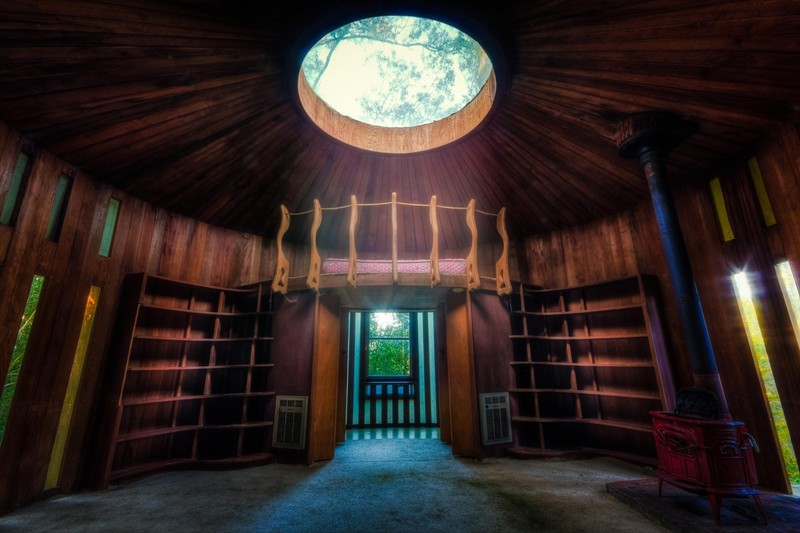
A MAN OF MANY TALENTS: ROGER SOMERS IN HIS DRAFTING STUDIO AND MUSIC ROOM AT DRUID HEIGHTS
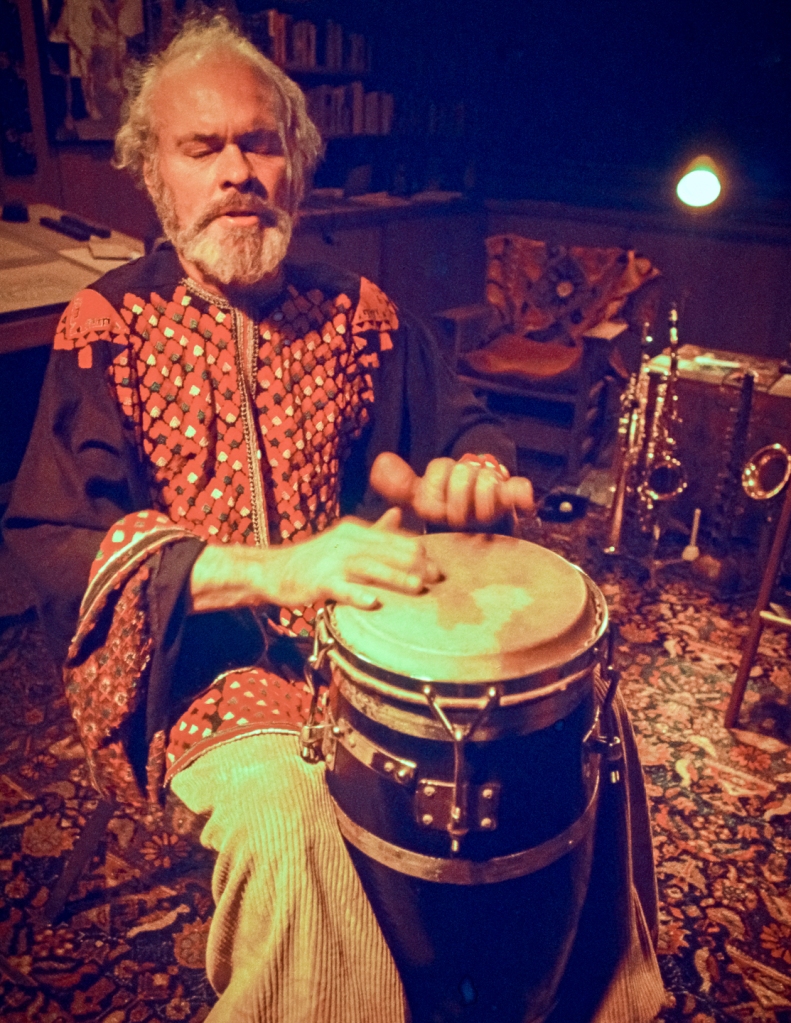
This early 1970’s photo captures Druid Heights original resident Roger Somers playing the conga. On the left and behind him are his drafting table and books on architectural subjects, while on the right are several of his other favorite instrument, the saxophone along with what appears to be a small Indian Sitar.
It was in this room that he put his ideas on paper, including the design of the bus for rock star Neil Young. Given the incredible detail and that the project was being built by a crew of craftspeople needing highly detailed directions the drafting table must have seen a lot of use. But Roger played as hard as he worked, and music was certainly a favorite form of play for him and his many top drawer musician friends.
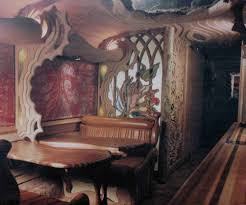
The photo below shows a broader view of the same room and was taken probably taken around the same time or not long afterwards. Sadly, this room is in terrible shape today, and would very likely need to be be rebuilt from the ground up if it was to be brought back to life. Other buildings at Druid Heights are in better shape but sliding towards the same fate unless steps are taken to, at a minimum, stop their decay.
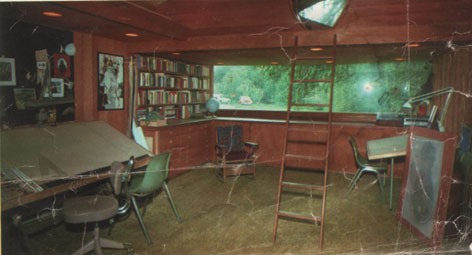
SPRINGTIME AT DRUID HEIGHTS, 2018

I doubt it is looking this lush and green out there now given the terrible drought, now in its second year. I took this photo of poet and artist Gerd Stern and his partner Judith on one of the two visits I have paid to Druid Heights since the Save Druid Heights group was founded in summer 2017,
Both those visits were made after first notifying the National Park Service. Newer followers of this site may not know that Gerd, with the help of Druid Heights’ Roger Somers and using Rogers workshop at Druid Heights built his first multimedia sculpture there over a period of 6 weeks in 1963. Our visit was the first time he had been there since that era.
For more info on Gerd Stern search his name. On the Save Druid Heights Youtube channel you can also check out some video footage of him shot on the same day at DH as well as a couple of others filmed elsewhere that day where he discusses his work, Roger Somers and Druid Heights.
Here is a link to one of those videos as a starter: https://youtu.be/vTKE21v1ZDk
MAGNUM OPUS, 1975: DRUID HEIGHTS’ ROGER SOMERS $400,000 BUS REBUILD FOR NEIL YOUNG
Druid Heights’ Roger Somers caught up with rock star Neil Young in an east coast hotel room while Young was on tour and pitched himself as the designer /craftsman more than capable of taking a standard bus and converting it into a work of art as well as a rolling home on the road for a rock star.
By the fall of 1975 the project was under way. Somers had designed the woodwork and assembled a team to assist in the building while Bart Ehman and another crew were handling the extensive mechanical alterations and metal work. The budget was ample, to say the least. The Marin County, CA newspaper the Independent Journal’s 10/27/75 front page article on the project reported the budget as $400,000, the equivalent of over $2,000,000 in 2021.
Sadly, several years later an electrical malfunction sparked a fire that destroyed the bus. Young later commissioned Somers to design a replacement, christened “Zuma”, which he still owns.
Somers designed and built many projects over the years both for clients and on his land at Druid Heights. The bus “Pocoahontas” by Young was the most audacious both for its design and craftsmanship. While it is lost, his beautiful designs on the land now owned by the National Park Service are not, just dangerously neglected. Use the link above to sign up to receive updates like this from our group on the history of Druid Heights and on opportunities to support the preservation of Roger’s designs and craftsmanship at Druid Heights.
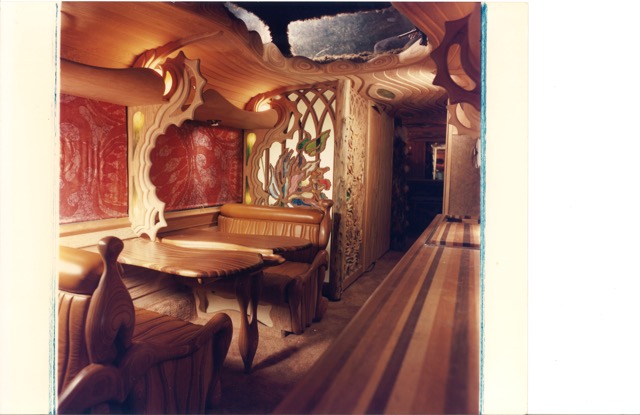
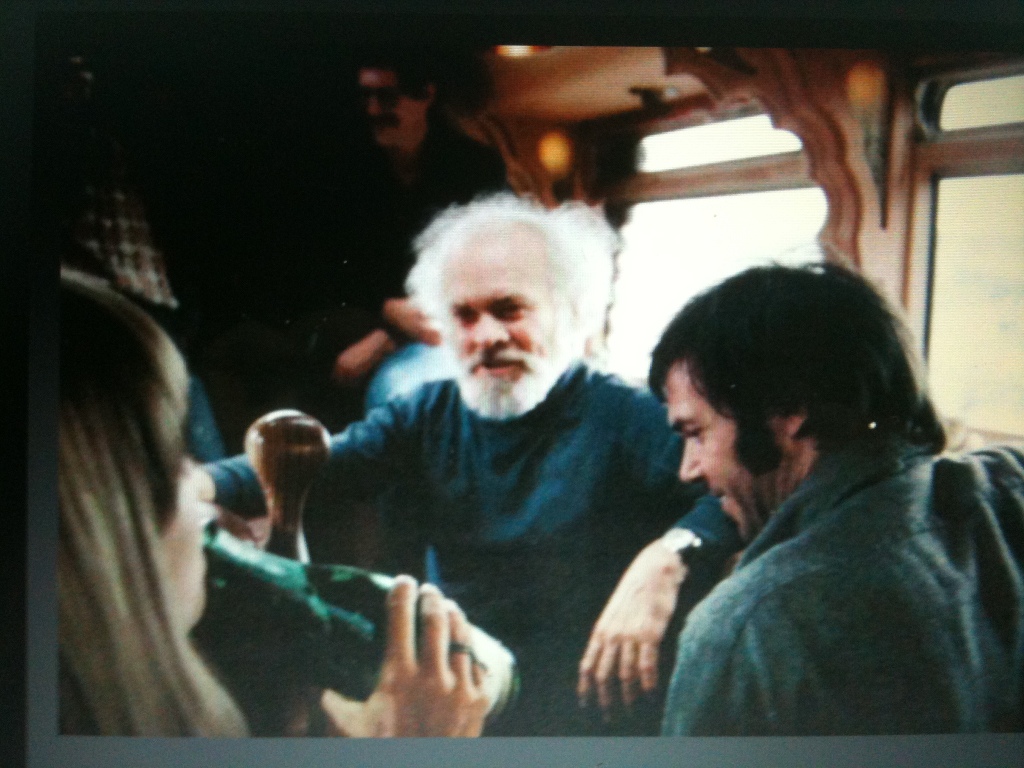
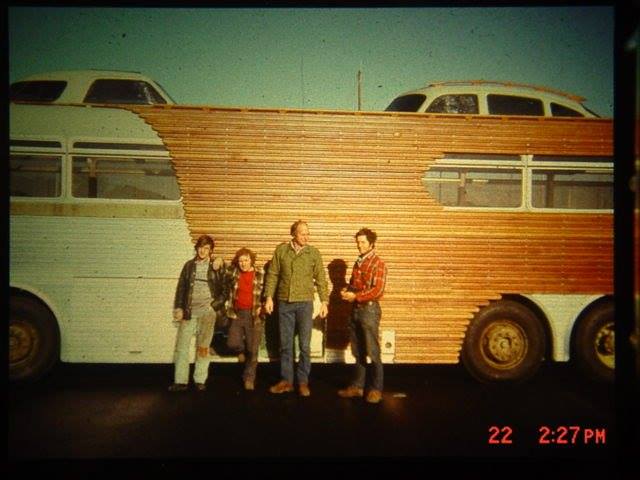
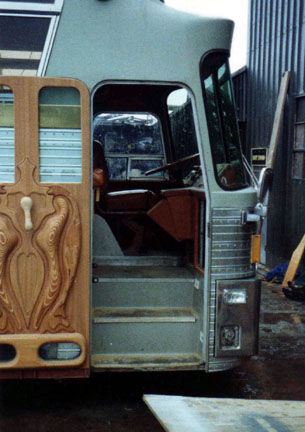
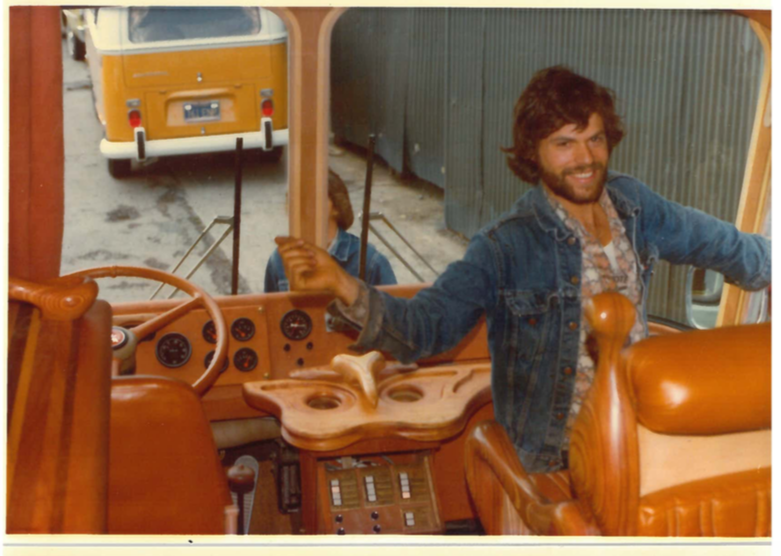
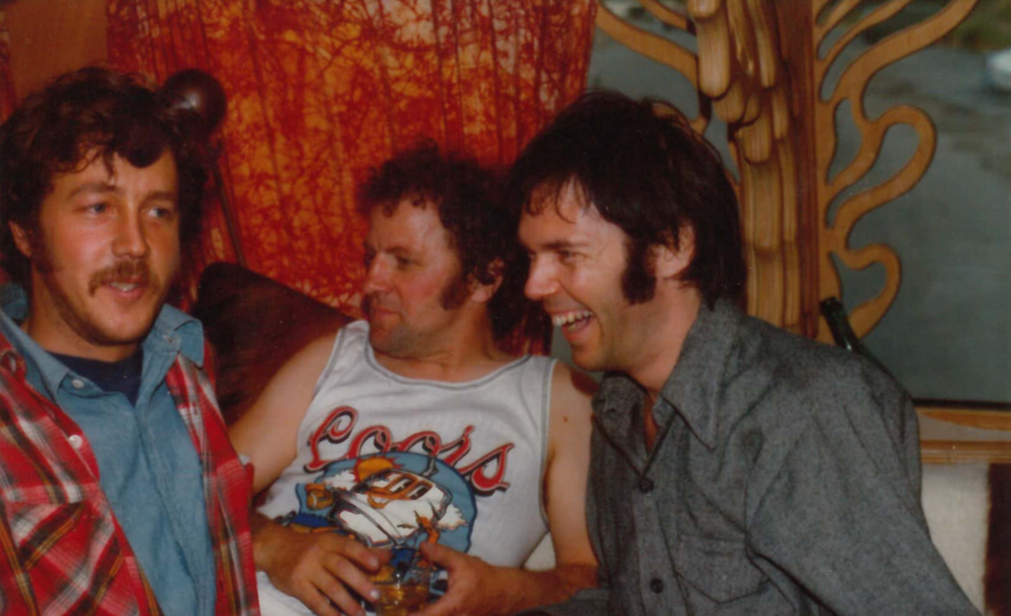
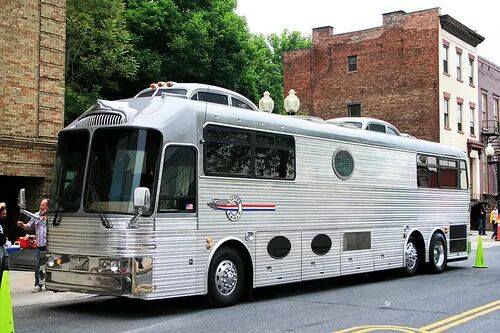
The California Preservation Foundation presents a webinar on Druid Heights
At the invitation of the California Preservation Foundation Save Druid Heights co-founders UC Berkeley architectural historian Greg Castillo and Michael Toivonen presented a webinar on Druid Heights in August of 2020. It is now available for viewing on Youtube without a paywall. Neither Greg nor Michael received any funds for their presentations.
Greg’s portion of the webinar covers the context of the architecture of the structures at Druid Heights while Michael’s focuses first on a brief tour of the Druid Heights site as viewed in photos taken during the last decade and then switches to vintage photos of Druid Heights that have been shared with the Save Druid Heights group. Their presentations are followed by a Q &A session. To date this is one of the best means to get a broad view of Druid Heights in the course of just over an hour.
DRUID HEIGHTS RECEIVES FRESH PRESS COVERAGE
The Marin County California weekly The Pacific Sun has just (1/19/21) published an article on Druid Heights that emphasizes the need for preservation. This is the first traditional media coverage Druid Heights has received for some time, and the first to contact the Save Druid Heights group as part of the author’s research. Besides offering a brief glimpse at the place, the people and the history, this article puts the primary responsibility for stewardship of this historic place, or lack thereof, where it belongs, with the owner of Druid Heights, the National Park Service. Use the link immediately below to read the article.

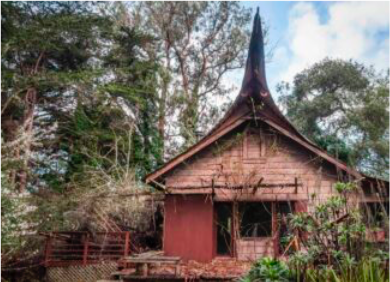
Not your typical old airstream trailer
Along side one of the smaller structures at Druid Heights is an aging airstream trailer. Nothing about its exterior stands out, and when I took this photo of it in 2016 I saw no reason to look closer.

Not looking closer was a big mistake. The photo below taken by Todd Sipes (https://www.toddsipes.com) shows why. The remodel of the trailer was certainly, given the style, designed by Druid Heights resident Roger Somers and represents a major creative flight. This Airstream trailer’s traveling days may have been through once it arrived at Druid Heights but it could move the imagination of those who resided within.

I have subsequently learned that this trailer has been included as a significant structure in the submission of Druid Heights for inclusion on the National Register of Historic Places as put forward by the National Park Service. The trailer became part of the submission following the submissions review by the California State Historic Preservation who is charged with reviewing all all such submissions for California places, even in cases where the owner is a branch of the Federal Government.
THOUGHTS, IDEAS AND TIME TO WRITE ABOUT LIFE

NEW CONCLUSION: ED STILES’ WOOD WORKING SHOP AT DRUID HEIGHTS IS ELIGIBLE FOR THE NATIONAL REGISTER OF HISTORIC PLACES
The results are in, meaning we have seen the final determination of eligibility for the National Register of Historic Places report for Druid Heights. The final version extended the period of Druid Heights significance through the year 1979, the year that one of Druid Heights significant resident builders and wood workers, Ed Stiles, completed his new wood working shop.
Ed’s shop is one of the most beautiful wood working shops the author of this post has ever seen, and he has visited a few noteworthy wood shops and has a coffee table book full of other examples to compare it to. Ed was a part of what is often called the Studio Furniture Movement, one of the many threads of American culture that run through Druid Heights.
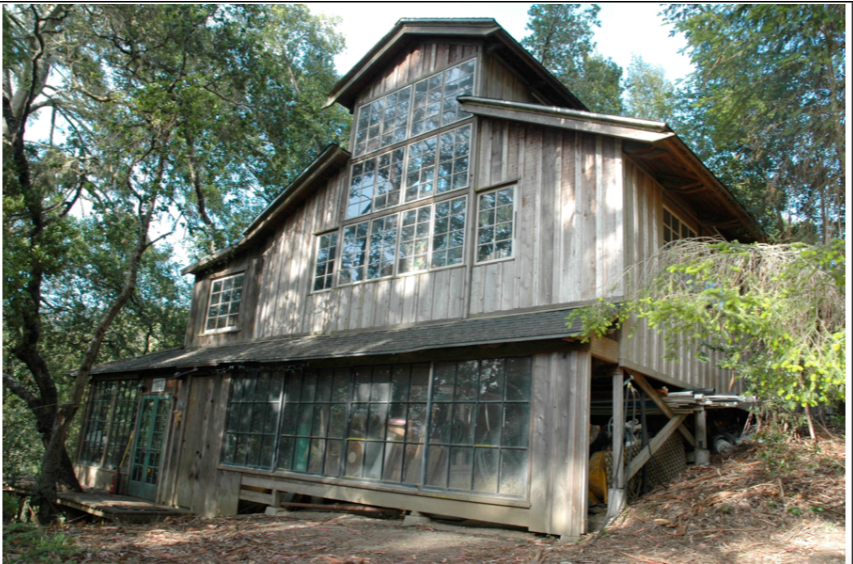
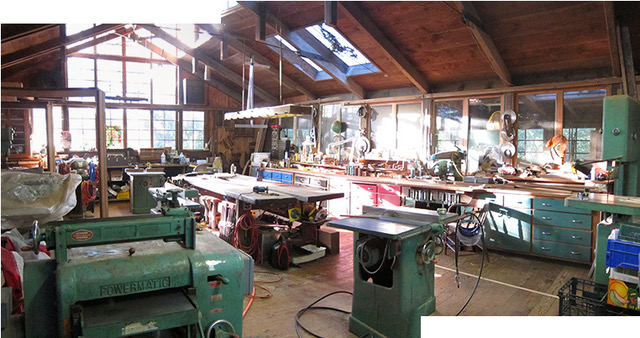
ROGER SOMERS ON THE STEPS OF THE TWIN PEAKS HOUSE, MAY 1968
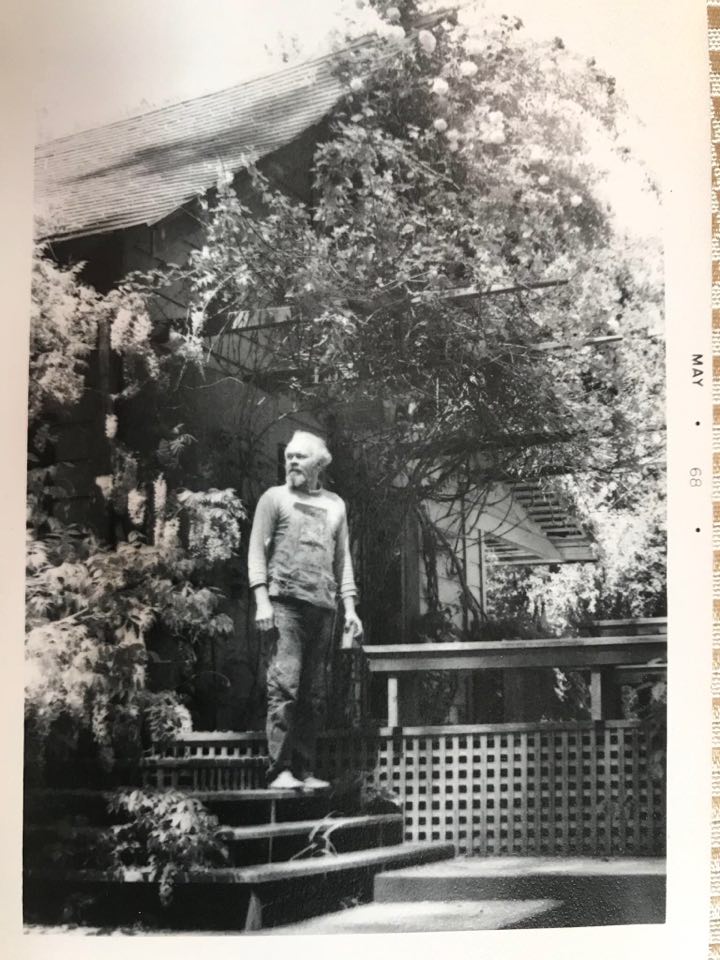
Roger Somers (1926-2001) was the Druid Heights resident most responsible for the radical transformation of the built environment of the former Haapa Family homestead. Here he is, dressed in work clothes including a carpenter’s apron, on the west steps of house called variously Muchado (pronounced much a do), The Big House, The Dragon House and The Twin Peaks House. The date on the print is May 1968.
Roger’s son Tagore describes the 1960s as the most significant era at Druid Heights. It would not have been that without Roger. He brought his many well known musician and artist friends to this house and even rented it to Pulitzer prize winning poet Gary Snyder for a few months at the end of the decade when he was working on a big building project near Lake Tahoe.
HIs partner at the time of this photo and the person holding the camera was Margo St. James, best known for her works as a sex workers rights advocate. Save Druid Heights has been sent this and a number of other photographs from her personal collection. They , like others we have received, give us a view of a rapidly receding time in a place where the creative spirit predominated.
VIEWS OF DRUID HEIGHTS CIRCA 1954, 1968, AND THEN THROUGH 1979
It was late winter or early in the spring of 1954 when Elsa Gidlow and her partner Isabelle Quallo ran into Roger Somers and his toddler son Tagore at a picnic in Berkeley, CA. This was not a first meeting, as at least Elsa, and perhaps Isabelle too had previously encountered Roger and wife Mary Somers at one of Alan Watts’ popular classes at the American Institute of Asian Studies in San Francisco.
The chance meeting in Berkeley marked a turning point in all of their lives. Their conversation turned to finding a more secluded off-the-beaten track place to live. Roger said he knew of such a place. A few days later Roger and Mary visited Elsa and Isabelle at their home in Fairfax, Marin County, CA and described a 5 acre homestead outside nearby Mill Valley with two small houses and several out buildings in an isolated setting.
Soon a visit was paid to that property, the place that Elsa would come to name Druid Heights based on her friendship with UC Berkeley Celtic Studies Professor Ella Young and her appreciation of the novel Wuthering Heights. It was early spring and Elsa in her autobiography relates that the long road in was still muddy from winter’s rains. But after that visit she decided to take a gamble and partner on the property with a young couple she hardly knew.
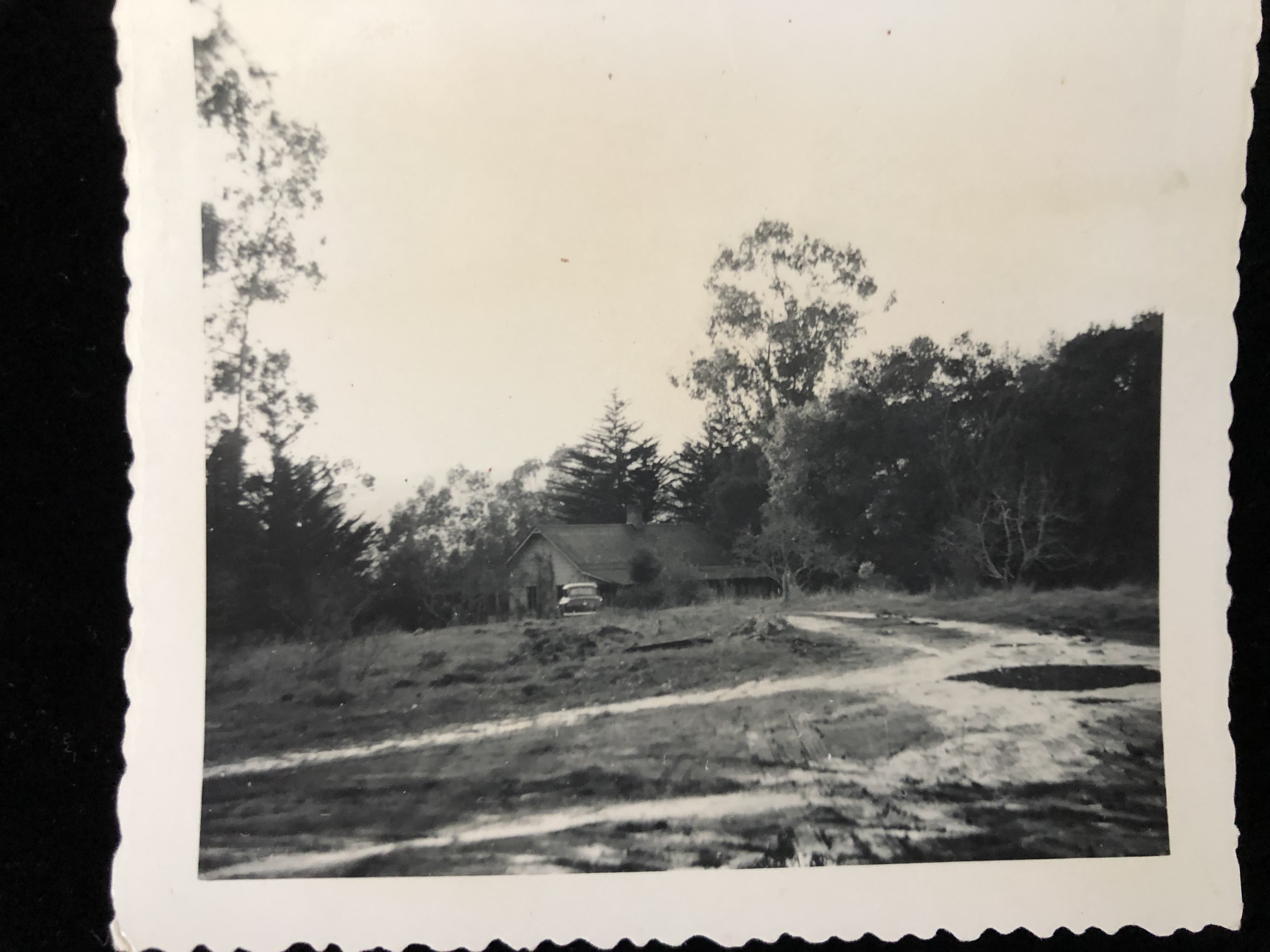
A photo of the 1926 Haapa Family house quite possibly taken during that first visit in 1954 by the soon to be partners. Note the 1940s car and the puddles.
Roger had the construction skills to renovate the buildings but he and Mary lacked a down payment. They wanted a partner who could supply that. After deciding to take the plunge Elsa went to the bank to take out a mortgage on her Fairfax home to supply the down payment.
She was turned down. It was 1954 and she was an unmarried woman whose income came from her work as a freelance journalist. A few days later she found herself describing her difficulty in securing a loan to a friend, the right friend. Dorothy Erskine assisted her in getting around the road block set up by the bank by giving her a private loan from her own funds. Later in life Elsa was to do the same for others.
What a change the next 14 years brought about. By 1968 the forlorn landscape and buildings of 1954 had been transformed. Roger had done extensive such work on the buildings, so much so on the former Haapa farmhouse as to make it nearly unrecognizable outside and even more so in. Gardens begun by the the Haapa family had been greatly expanded. The Stiles Family had joined the community and Ed Stiles had built what was in ’68 known as The Casa Rondo, and later, after the arrival of Alan and Jano Watts the Mandala House.
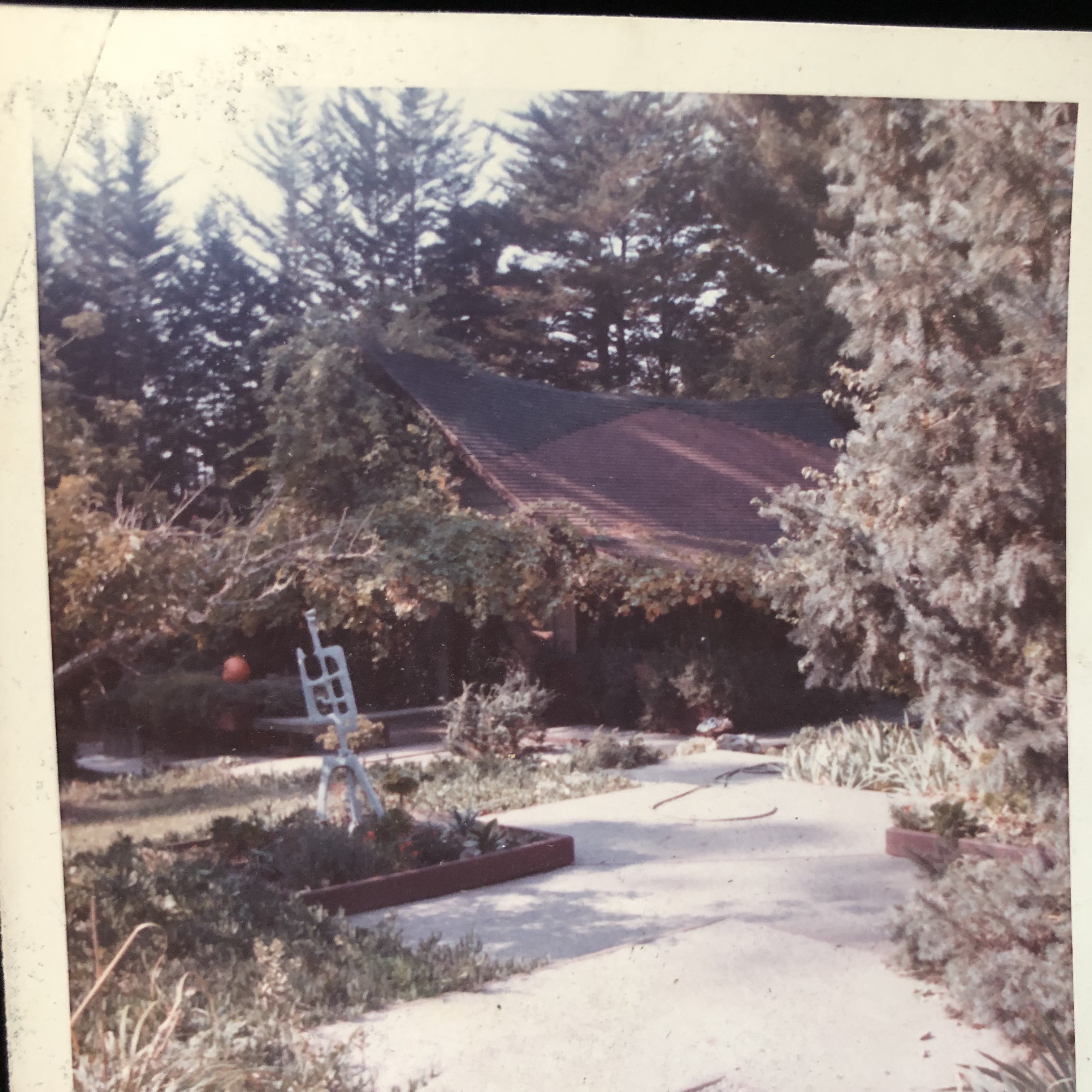
The former Haapa family home, later aka the Dragon House, the Twin Peaks House, or as it was often called at the time of this photo, 1968, The Big House. But while the high peaked roof projects a sense of big as well as some drama with the roof’s shingle pattern, the actual building foot print is approximately 1000 square feet
By 1979 the last major structure to be erected at Druid Heights, Ed Stiles’ woodworking shop, was finished. Also added during the years between ’68 and ’79 were the circular library built for Alan Watts, the Meditation Hut adjacent to Elsa Gidlow’s house and the guest house adjacent to the Old Chicken Barn aka the Stiles’ house. Each of these buildings typifies different aspects of the unique culture of the era that Druid Heights was both a part of and helped give birth to.

Ed Stiles’ wood working shop as from the west circa 2010. From a National Park Service report.
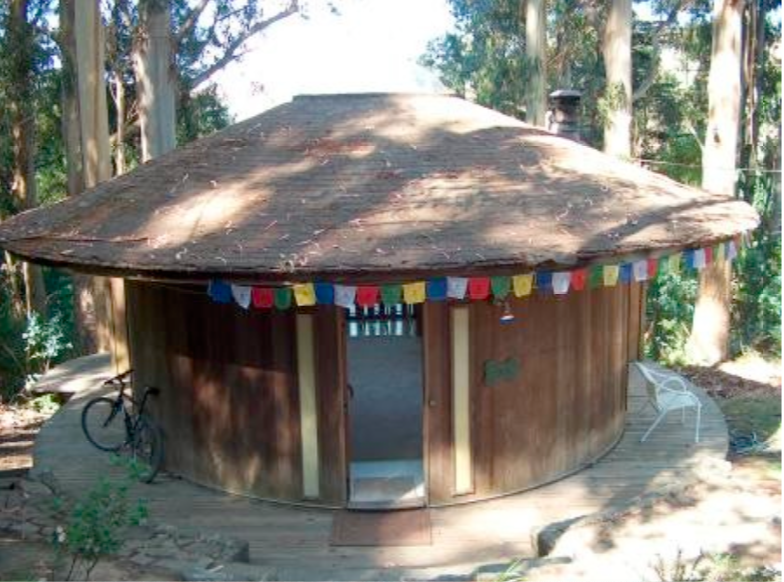
The Library when last occupied in 2003 from a National Park Service report
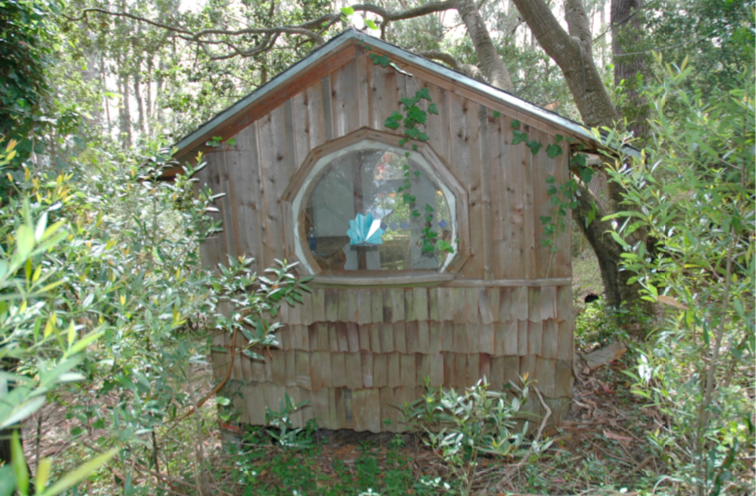
The north side of the Meditation Hut near Elsa Gidlow’s house. From a National Park Service report.
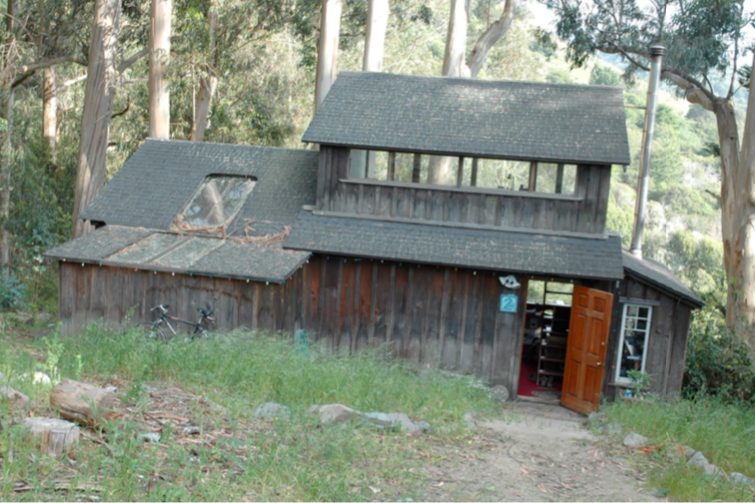
The Stiles’ guest house from the north. From a National Park Service report.
BACK TO THE TWIN PEAKS “SPA”
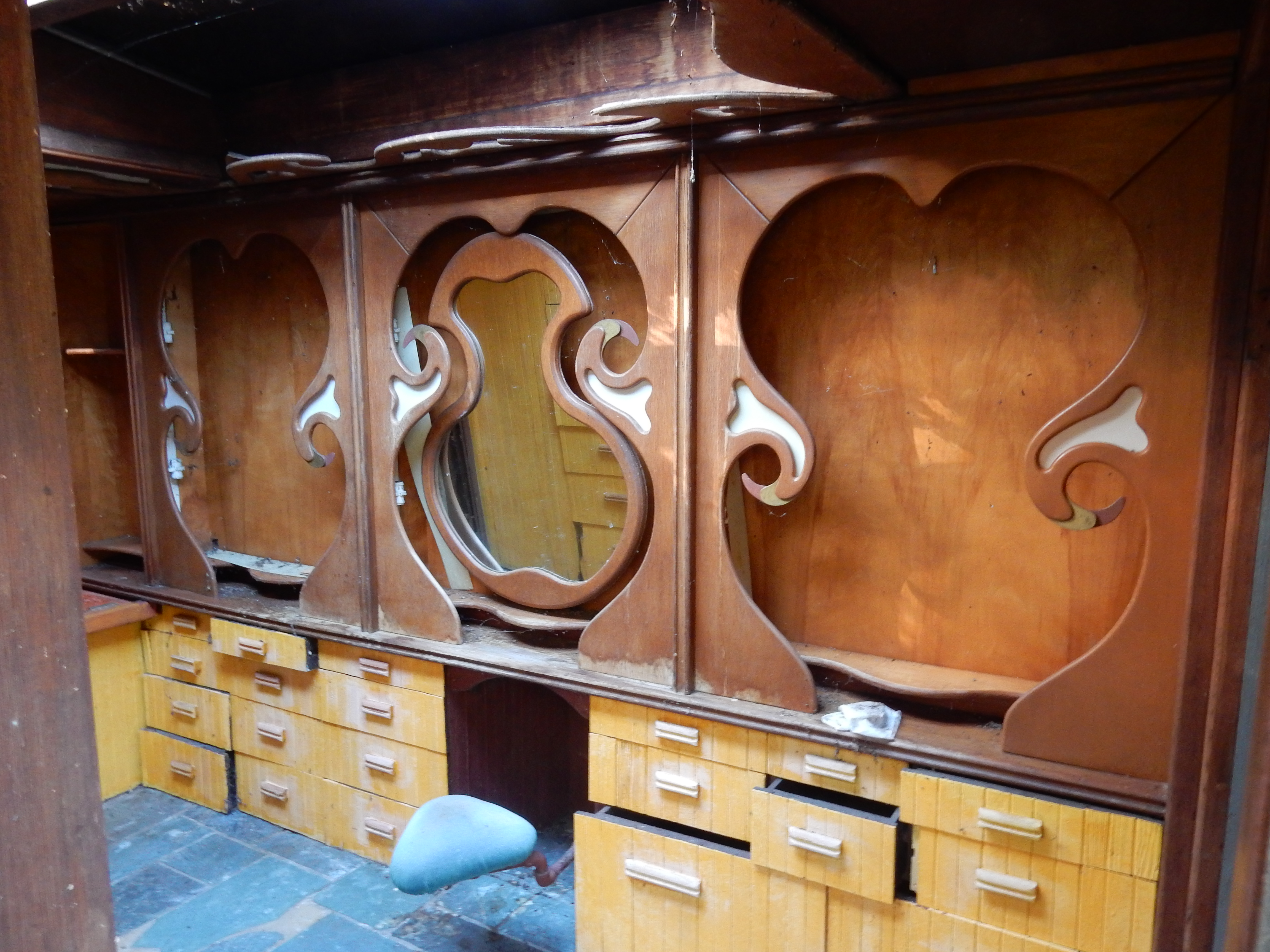
While we do not have it’s exact dimensions the Twin Peaks house at Druid Heights is not a large house, and in fact it is really quite small by the standards of your typical American home, which for homes constructed in the US last year was a whopping 2600 square feet. I doubt the Twin Peaks is much more than a third of that. But for such a small house the bathroom, or given its amenities in its final form, Spa, is quite large.
The photo of Margo St. James in this room shows it before the tiled shower was later added where the doors behind Margo are.That photo was sent to us by Save Druid Heights member and 1970s Druid Heights resident David Wills. This is the only photo we have of the “spa” from “back in the day”. The others were taken in 2016.
The bath tub behind the trap door in the floor is visible in the foreground of the full room length photo. Margo St. James position in the room length photo would be immediately in front of the shower at the far end of he room. When the photo with her was taken there was no skylight and possibly no door to the exterior to the right of her.
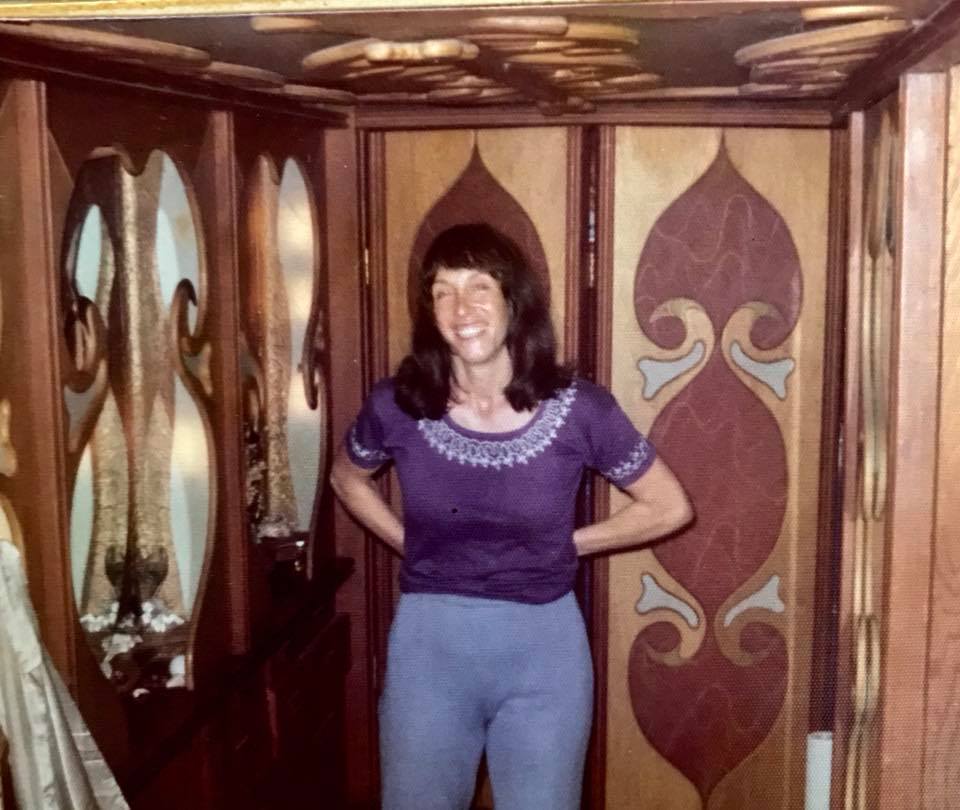
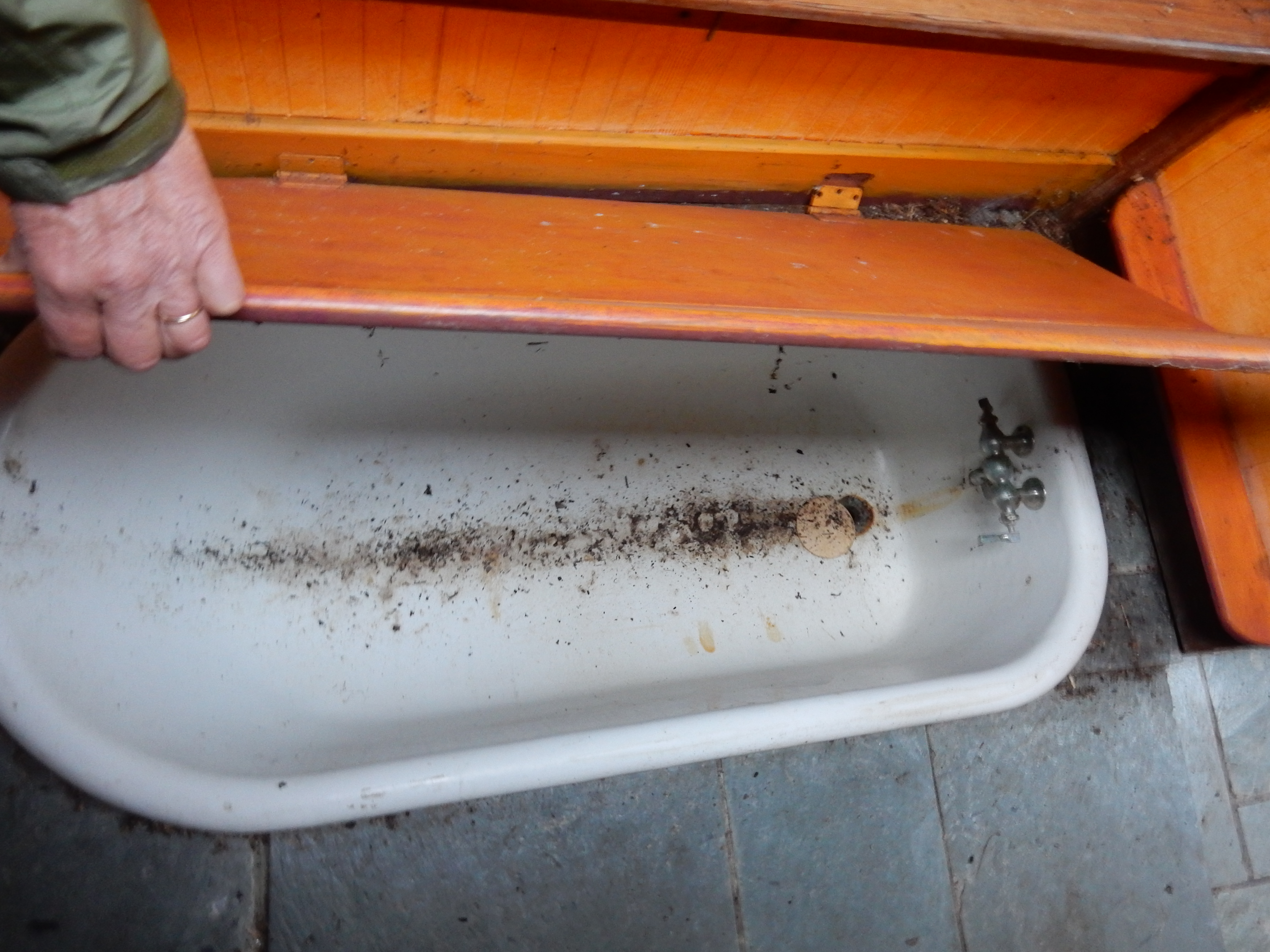
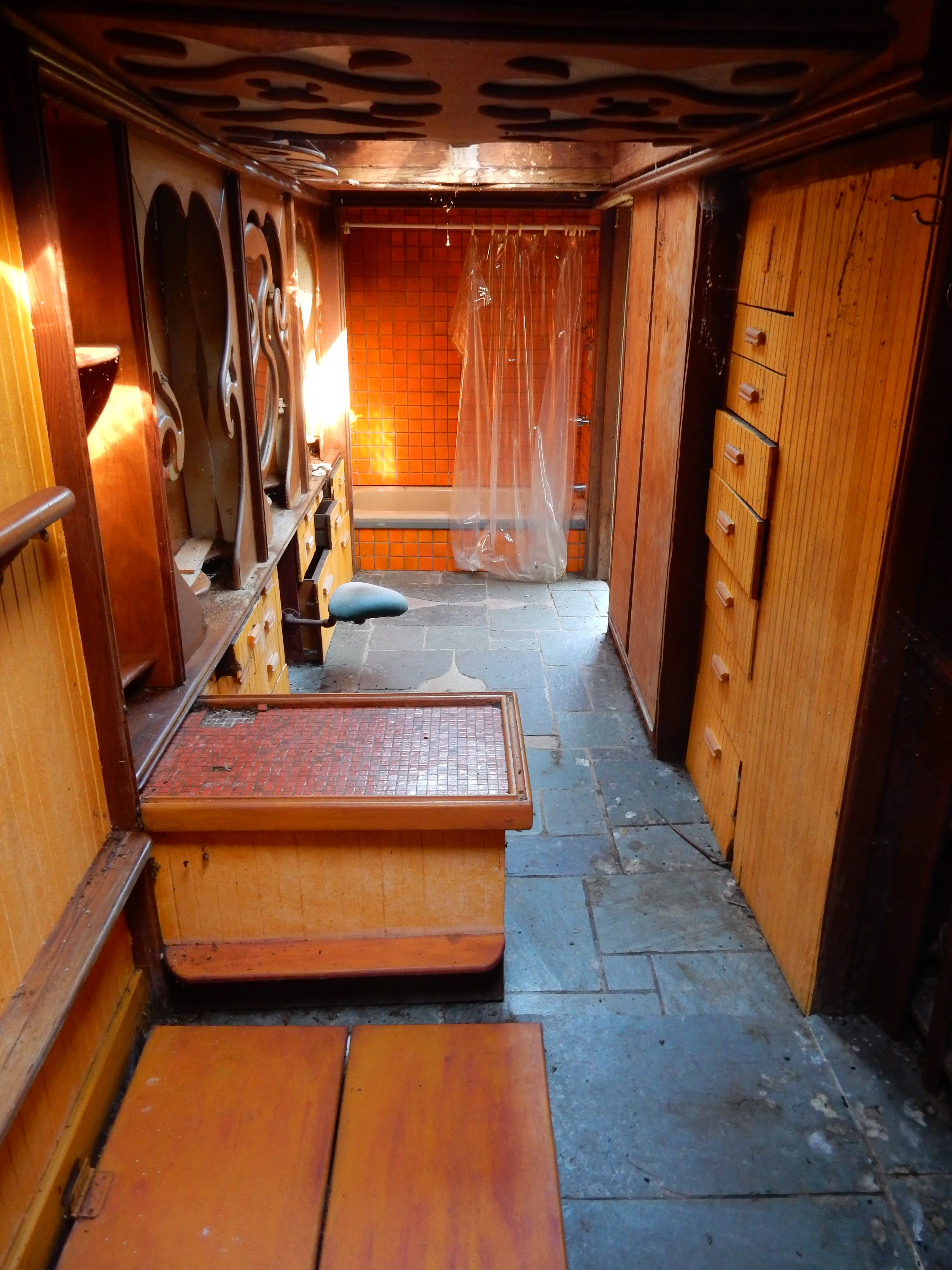
RESIDENTS AND VISITORS OF DRUID HEIGHTS

WHAT IF DRUID HEIGHTS WAS RESTORED TO HOW IT WAS IN 1973?
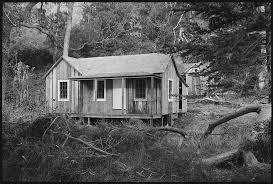
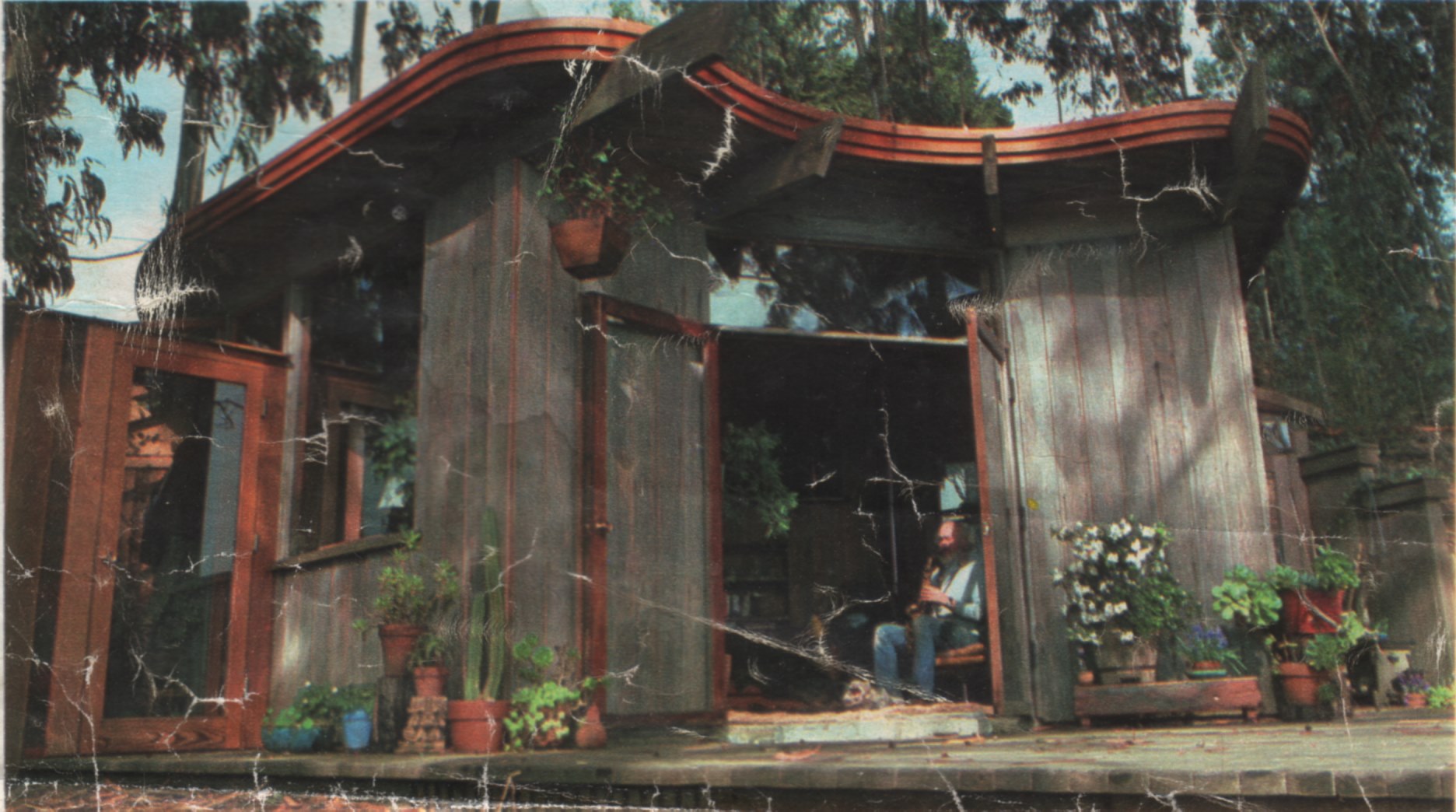
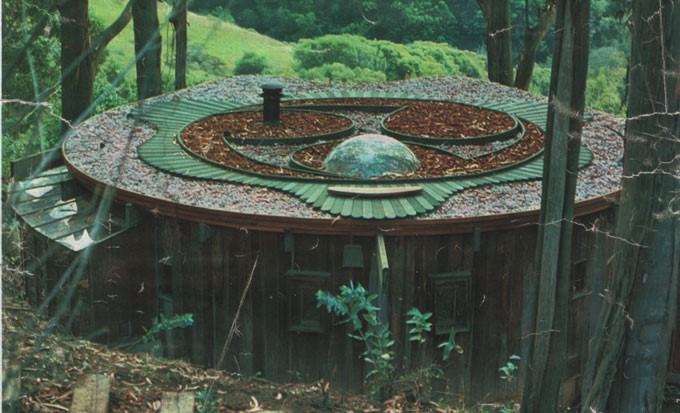
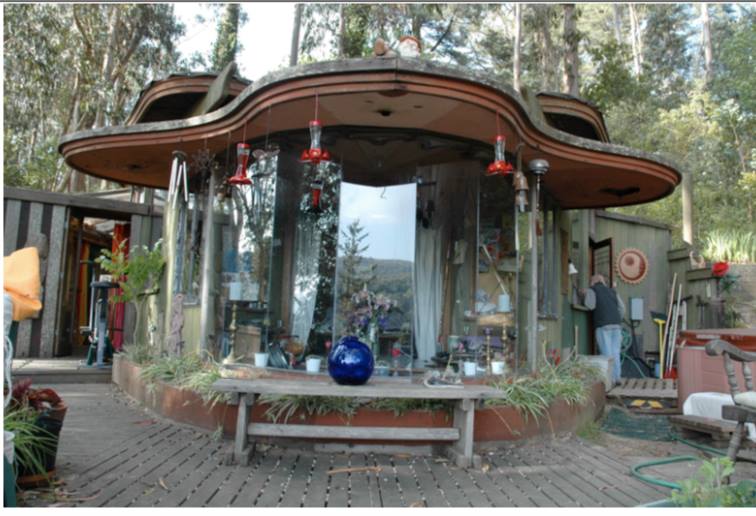
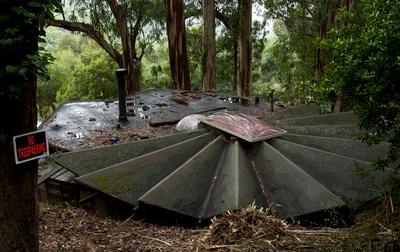
A PICNIC FOR MICHAEL TOIVONEN’S SAVE DRUID HEIGHTS FRIENDS
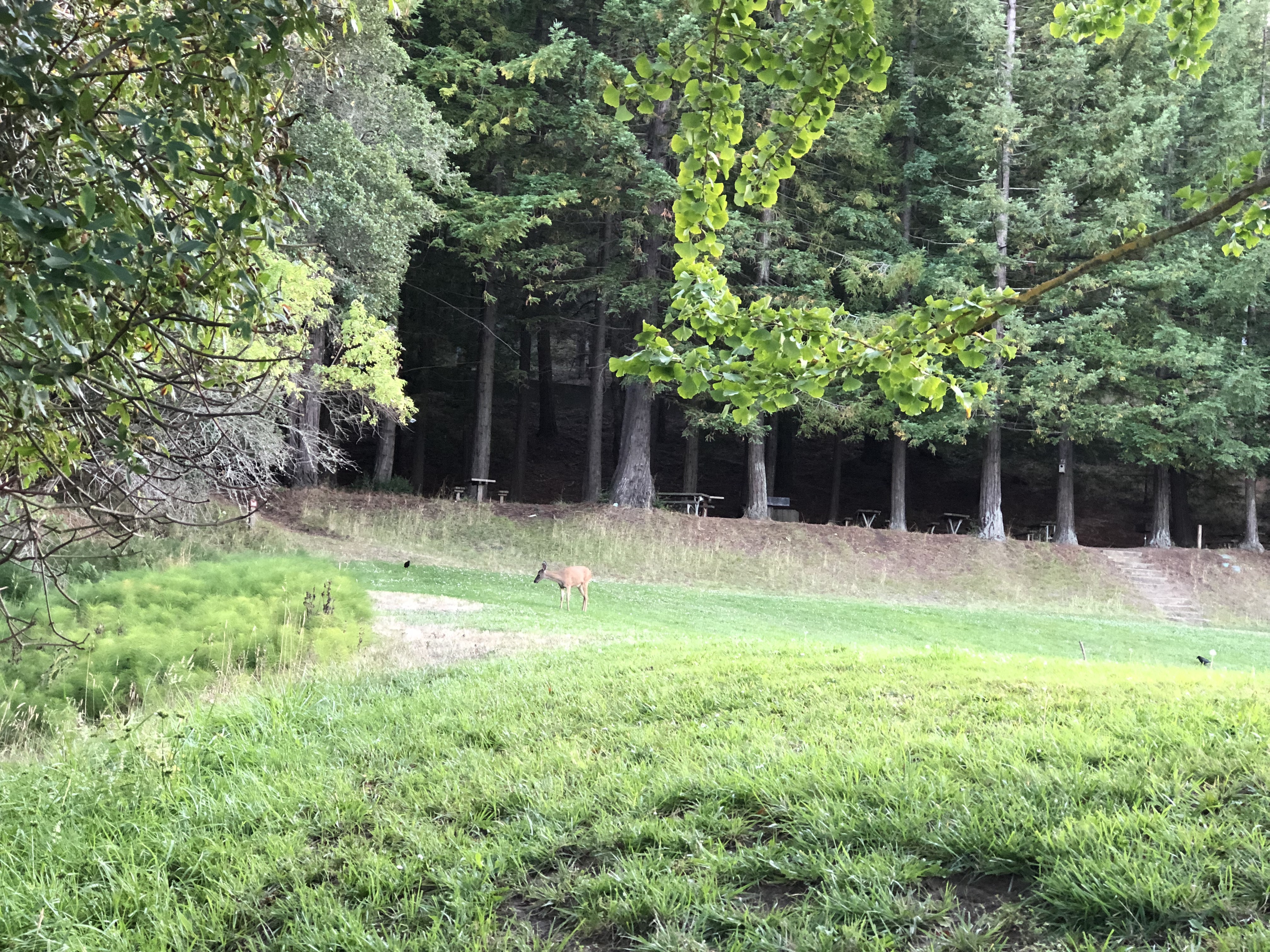
The picnic location, site 10, Paradise Beach Park, Tiburon, CA
Michael Toivonen, co-founder of Save Druid Heights, is holding a picnic on Sunday September 22nd from noon until 5 pm at Paradise Beach Park, 3450 Paradise Drive, Tiburon, CA and is inviting his friends who favor preserving Druid Heights’ history and architecture for future generations. If that describes you then you are welcome to attend but you will need to follow the steps bellow.
NOTE: The maximum number of guests is 50. There is a chance this could be revised upwards but that info will only be made available to Save Druid Heights Facebook group members.
FIRST: you need to join the Facebook group Save Druid Heights. In lieu of that you could send Michael an email at savedruidheights@gmail.com that tells him a little about your interest in Druid Heights and why you are unable to join the Facebook group, the preferred method of joining in with others who feel the same. He will cancel the tickets of anyone who does not follow through on this requirement.
SECOND: once you have either joined and been approved for the Save Druid Heights group or gotten a positive response from me to your email you will need to use the Eventbrite link below to get your name on his guest list, meaning you have signed up for a ticket. Note: those who sign up for the Save Druid Heights Facebook group need to answer a brief questionnaire. You will receive notice of this at signup. This is to prevent abuse of the group, such as by those who want to use it for commercial purposes.
AND CONSIDER THIS: When you sign up for your free ticket to his picnic you will be given the option to add additional guests. Before you do so consider this: He is holding this picnic so his friends who are passionate about Druid Heights can get together. Included amongst those are going to be people connected to Druid Heights who will be able to share some of their experiences there “back in the day”. While it would be nice if the picnic could be wide open that is not possible and since early indications are that it will fill it would be best if those who come are there for the main reason, not just to have a picnic. An option to consider would be for others to go elsewhere in the park while you spend some time with us, and then join your friend or family member for the balance.
IMPORTANT DETAILS ABOUT THE PICNIC: This is not a potluck. You may certainly bring something to share with others but it is up to you.There will be some basic supplies on hand such as non-alcoholic drinks, paper plates, napkins, & etc. There are two barbecue pits and there will be charcoal and fire starting supplies for those who want to use them.
Here is the link to the signup with Eventbrite:
https://www.eventbrite.com/e/michael-toivonens-druid-heights-friends-picnic-tickets-71838311323